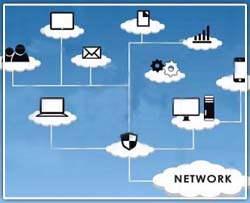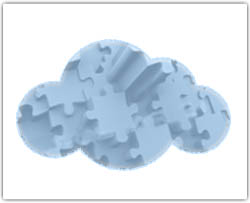Latest Articles
12.21.2012What Can Rendering Service Market Get From Cloud Computing?
12.20.2012Penetrating the Japanese Social Gaming World With the Help of Japanese Social Gaming Companies
12.19.2012Cloud-Based Rendering – the Logical Next Step for Render Farms
Archives
Categories
Tags
Android Basic Cloud Concepts big data CIO cloud Cloud adoption Cloud applications Cloud benefits cloud computing cloud concepts cloud gaming cloud hosting Cloud in business Cloud in Vertical Industries Cloud Migration Cloud News cloud provider cloud security cloud servers cloud services cloud storage cloud technology Enterprise gaming industry Google Government IaaS IT Japan mobile applications mobile gaming PaaS private cloud public cloud SaaS security Small Business small businesses smb SMBs social gaming Social Media social network virtualization virtual servers
Call 855-466-4678
09.14.2011
 June’s Structure Conference in San Francisco was much more business and market dynamics centric in its look at the cloud than in previous years where the focus had always been on pure technology and services. This new focus gave coherence to the talks that had not been there before.
June’s Structure Conference in San Francisco was much more business and market dynamics centric in its look at the cloud than in previous years where the focus had always been on pure technology and services. This new focus gave coherence to the talks that had not been there before.
Unlike the previous year’s conferences where the preponderance of “vaporware” overshadowed all else, this year saw vendors with real products and services and customers who had experiences with private and public cloud deployments. What a difference a year makes.
One of the biggest changes was from a focus in 2009 on “virtual machines” and 2010 on “workloads” to the current emphasis on “applications”. Everywhere you heard talk about the importance of supporting application development, integrating applications and the operation of applications in the cloud. Truly in 2011 applications was King.
If you accept the concept that cloud computing is an operations model and not a technology, then this development makes perfect sense. In the stack there is nothing that is truly “cloud”. For cloud, management and monitoring protocols are not changed because it is how you operate and provision these elements that make it cloud. And the secret to this is to make them on demand and with the ability to scale appropriately.
Cloud is not just an operations model – it is an application centric operations model. As we have witnessed in the past year, IT is moving slowly towards an application-centric operations model and away from the old server centric model. The end result will be management and monitoring tasks that are defined by and targeted at the application itself instead of the infrastructure that is underlying.
This leads to an interesting corollary. If clouds are application-centric, then the perspective of the application must be considered when reviewing the problems resolved by cloud solutions. Or to look at it another way, it is a short-term solution to develop a tool specifically for virtual machine management in the cloud. Sooner or later managing a guest operating system in a virtual machine will become unworkable as the application begins to hide the containers in which it runs.
However a disruptive concept that has tremendous promise is the development of tools in the cloud model that have the development, deployment and operations of code and data, in essence displacing the old server-centric model of the past. In terms of operations, very few enterprises have the tools and processes for this concept. At least today.
There are a few application-centric tools for cloud around, such as EnStratus or RightScale. Although each of these is looking to provide tools for managing applications across disparate cloud systems, they tend to still be a trifle VM-centric. At least from this point of view. But then again most applications are built and deployed these days as an end product of this VM viewpoint.
There are several approaches one can take that would make an application-centric approach achievable:
Keep in mind that even with application-centric operations you will still require an ability to deliver the service that the application is deployed to and the infrastructure that supports this service. This includes the delivery of the application itself when deploying SaaS. Remember that managed services and data center operations become the responsibility of the cloud provider, whether it is public or private, and not the end user.
At the end of the day the center of this difficult cultural change for many IT departments is the concept of separating concerns in operations. The good thing is that this resulting change will give business units the true ability to focus on business functionality. This is the gain from making applications the center of the cloud computing universe.
Our newsletters and blogs are written to provide you with tools and information to meet your IT and cloud solution needs. We invite you to engage in our online community by following us on Twitter @GMOCloud and ‘Liking’ us on Facebook.
09.13.2011

With news of sites being hacked and other disturbing events on the web, is it any wonder that many businesses are apprehensive about moving their business into the cloud? Yet despite these events experts are predicting a large increase in the number of businesses that are planning to move to the cloud in the next few years. The reason is obvious, with the cloud making possible custom IT services simply and quickly at a lower cost every business, whether a start-up or established company, wants to move to the cloud.
There are still some businesses that are holding back, primarily because of fear or lack of information. There are three primary areas where knowledge of the risks and how to combat them can help any business decide if moving to the cloud is right for them.
Security – Cloud computing can be seen as more vulnerable to online attacks than the alternative of storing data on the company’s private servers because of being based on the Internet. While this sounds logical, the actual situation is that having dedicated staff ensuring cloud security and setting security standards will give you a higher level of security and is more reliable. To be sure that a cloud service provider’s security is at the level you need, examine their security policy. You can also stay in touch with the latest in cloud security through The Cloud Security Alliance which is a collaboration of cloud experts who are actively promoting best standards and practices for security assurance in the cloud computing community.
Compatibility – This is another issue which often holds back larger organizations and enterprises from moving forward with cloud technology. Sometimes the existing IT configuration is too complicated to restructure for compatibility with cloud technology. When this happens, often the best solution is the hybrid cloud to give the business the best of both worlds. Often a third party provider is brought into the picture to provide assistance in handling the transition that will dramatically reduce time and costs for both personnel and technology for the business.
Availability – Many businesses express concern about the degree that cloud data will be available to them. This is of particular concern when it comes to data and service interruptions because businesses may be used to their servers being in close physical proximity and control. The best way to approach this is to discuss with the provider and assess the risks involved along with risk management responsibilities for each of the parties.
In the final analysis, cloud computing for each business can only be undertaken once all of the IT advantages and disadvantages along with the business impact it will have are taken into account. The determination of what the business is looking to achieve from cloud computing along with a discussion with your cloud provider regarding security risks can help any business to configure the cloud environment that works best for their particular business context.
Our newsletters and blogs are written to provide you with tools and information to meet your IT and cloud solution needs. We invite you to engage in our online community by following us on Twitter @GMOCloud and ‘Liking’ us on Facebook.
09.12.2011

Imagine driving down the street while your car sends data about weather and traffic to the cloud so you have the latest information to get you home quickly and safely. If this sounds like something out of a science-fiction novel, guess again. This is just one example of the kind of technology Intel is hoping may evolve from their latest collaborative investment with Carnegie Mellon, The Intel Science and Technology Center for Cloud Computing.
This research center, one of two that are part of a five-year $100 million program to accelerate innovation in key areas and reach out to increase university research, is a partnership between Intel data center experts and Carnegie Mellon researchers. Along with the centers, the program has seen the development of the Open Data Center Alliance, an association of Global IT leaders to define customer requirements for cloud computing.
The focus of the center is to resolve outstanding issues in device and task specialization, further research into automation for agility and scalability, increase results in the analysis of large bodies of data and explore the interaction between intelligence at the edge and in the data center.
This new expanded program will be openly inviting researchers from across the US academic community to take part in the process of identifying additional ISTCs by submitting information they consider vital as part of the consideration. In addition, Intel is looking forward to “tighter collaboration between university thought leaders and Intel” by publicly releasing results through technical publications and open-source software releases of the open IP models they intend to use.
The ISTCs which include the Intel Embedded Computing Center, “are expected to open amazing opportunities,” said Justin Rattner, Chief Technology Officer at Intel. These centers, the first expected to be awarded in 2011 and launch in 2012, will create a new cloud computing research community that includes ideas from the top academic researchers and broadens Intel’s “Cloud 2015” vision. For a look at that vision, and how this research center is at the heart of it, watch Intel Data Center Group VP and GM, Kirk Skaugen, discuss the future of the cloud. It’s a vision well worth considering.
Our newsletters and blogs are written to provide you with tools and information to meet your IT and cloud solution needs. We invite you to engage in our online community by following us on Twitter @GMOCloud and ‘Liking’ us on Facebook.
09.9.2011

“In three years… more than 80% of the devices connecting to the Internet will not be Windows-based personal computers.” This statement was part of a keynote speech by VMWare CEO Paul Maritz recently at the VMWorld sessions in Las Vegas. A long time executive at Microsoft in the 80s and 90s, outranked only by Bill Gates and Steve Ballmer, Maritz was in Las Vegas to talk about his vision of the future, the cloud and the Internet as a whole. He spoke of the need for new applications and new approaches as the cloud creates new realities for IT.
Maritz touched on many aspects of this change, including the growth of virtual machines, stating that a new virtual machine is deployed every six seconds, making the rate of growth faster than the U.S. birthrate. He also talked about how the evolution of data fabric will be a key to many upcoming changes. “The relational database cannot handle the way at which and the rate at which these applications are going to be developed. And out of this, we can already see the beginnings of the next canonical set of applications that will be about scale being in real time,” Maritz said.
The old world way of collecting data and storing it until the information is needed will become obsolete as the younger generation of users and IT workers, weaned on Facebook and Twitter, will demand real-time information. Although this change in how business intelligence is handled is not new, the focus of how it is evolving is. The ability to customize information whenever needed within the context it was requested is going to be crucial for future business applications.
This will be a challenge for many CIOs and IT decision makers and Maritz was quick to point out that with the vast majority of applications currently being produced by programmers under the age of 35, legacy systems and cumbersome methodology will need to move aside for new ways of looking at solutions and different ideologies.
“The problem is the people under the age of 35 don’t sit behind desks, and they don’t spend all of their time lovingly tending to documents” Maritz said. “They will be dealing with streams of information that will be coming at them in much smaller chunks and much larger numbers. We’re moving into a new post-document era, and we will need different solutions.”
The era of BYOD (bring your own device) is upon us and he cautioned that CIOs would be well advised to stop wasting time and energy fighting this inevitable change. We can no longer control what device the user has in their hands; IT cannot assume that they can make that happen anymore, he cautioned. The changes in the consumer world are going to drive that factor, and we might as well learn how to work with it.
“We’re going have to learn how to deliver capability to users independent of the particular device that they happen to have in their hands at that time of day, and do that in a way that’s not only secure on the one hand, but acceptable to the user in the other,” he said.
No matter how you look at it, change is coming. Are you ready for it?
Our newsletters and blogs are written to provide you with tools and information to meet your IT and cloud solution needs. We invite you to engage in our online community by following us on Twitter @GMOCloud and ‘Liking’ us on Facebook.
Image Credit: Jay Greene/CNET